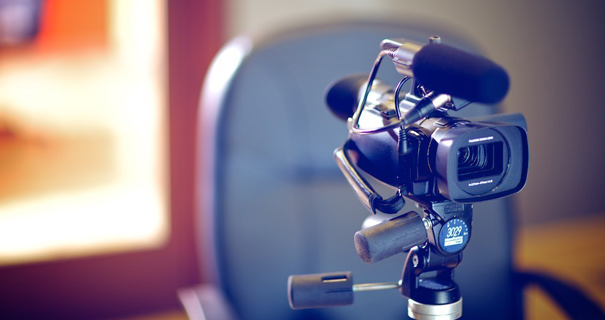The Power of Visuals in Test Presentations for a Winning Argument
The combination of visuals in test discussions has arised as a vital factor in properly connecting complex debates to jurors. By making use of numerous forms of visual aids-- be it diagrams, pictures, or computer animations-- lawyers can enhance understanding and retention, inevitably forming the court's assumption of the case.
Value of Visuals in Tests
In several legal setups, visuals play an important role in improving the performance of test discussions. The integration of aesthetic elements can dramatically affect jurors' understanding and retention of complex information, thereby shaping their assumptions and decisions. Visuals, such as graphes, layouts, and photos, can streamline intricate narratives, making them much more accessible and compelling.
Furthermore, the human mind processes aesthetic info much more successfully than message, which highlights the importance of including visuals right into legal debates. By converting thick lawful ideas into visual formats, lawyers can facilitate more clear interaction, making sure that key points are not neglected during tests.
Additionally, visuals serve to involve jurors on a psychological degree, promoting a connection to the case that words alone may fail to achieve. The strategic use of visuals can stimulate empathy, motivating jurors to think about the human elements of the case.
Eventually, the value of visuals in tests depends on their capability to improve quality, improve juror involvement, and enhance the narrative existing. This powerful combination is crucial for crafting persuasive debates that resonate with jurors and affect the outcome of legal process.
Kinds Of Visuals to Utilize
Reliable trial presentations can greatly profit from a variety of aesthetic tools that deal with various aspects of the instance. trial presentations. Making use of representations and charts can successfully damage down intricate information, making it a lot more absorbable for jurors. For circumstances, flowcharts can show the series of occasions, while bar chart might succinctly contrast appropriate data points.

Animations and simulations can also play an important function, particularly in cases entailing technological information or elaborate circumstances. These visuals can dynamically stand for processes or activities, giving quality and involvement that fixed photos might not achieve.
Furthermore, infographics combine message and visuals to sum up crucial information properly. They can offer timelines, statistics, and substantial situation points in a visually attractive fashion, making it much easier for jurors to follow the argument.
Enhancing Comprehension and Retention

Enhancing understanding and retention during trial discussions is essential for guaranteeing that jurors realize the necessary components of an instance. Visual aids function as powerful devices in this respect, translating intricate info into conveniently digestible layouts. By making use of charts, diagrams, and infographics, attorneys can streamline elaborate data and emphasize bottom lines that may or else be forgotten.
Research studies have shown that individuals keep details dramatically much better when it is provided aesthetically. This is specifically significant in a trial setting, where jurors might be overwhelmed by the quantity of proof and testimony. By strategically incorporating visuals, lawyers can route go to the website jurors' focus to one of the most vital aspects of the instance, strengthening their understanding and memory of the material presented.

Creating Involving Presentations
Captivating jurors' interest throughout test discussions is necessary for communicating a compelling narrative. Engaging discussions take advantage of visual elements to create a remarkable experience that reverberates with jurors. The calculated usage of graphics, animations, and video clips can clarify complex information, making it extra easily accessible and relatable.

Furthermore, integrating storytelling strategies can improve interaction. Providing evidence in a rational sequence that develops sob story permits jurors to get in touch with the product on a personal level. Diverse presentation formats, such as incorporating brief video or interactive aspects, can also suffer rate of interest and interest throughout the trial.
Inevitably, an interesting discussion promotes a much more extensive understanding of the case, allowing jurors to better value the disagreements being offered and bring about an extra positive outcome.
Study and Success Stories
Many study highlight the substantial impact of visuals in trial discussions, demonstrating their ability to affect juror assumptions and inevitably the end results of situations. For instance, a significant case including an injury claim illustrated exactly how the usage of a 3D computer animation of the mishap scene made clear intricate information. Jurors reported feeling more enlightened and empathetic, dramatically swaying their decision in favor of the plaintiff.
In one more circumstances, a corporate litigation case utilized infographics to present financial data and timelines, making complex info easily accessible. The graph enabled jurors to grasp the nuances of the case more successfully than spoken descriptions alone. trial presentations. As a result, the court returned a judgment that exceeded the customer's assumptions
Additionally, a criminal defense case utilized photographs and video clip proof to establish an alibi. The engaging visuals not just aided in producing uncertainty yet read more likewise reverberated psychologically with jurors, leading to a pardon. These success stories emphasize the my response need of integrating visuals right into test presentations, as they boost understanding, retention, and ultimately, the convincing power of legal arguments. The critical use visuals is indisputably changing the landscape of trial advocacy.
Conclusion
In conclusion, the strategic incorporation of visuals in test presentations significantly improves jurors' understanding and retention of intricate details. Engaging discussions, supported by compelling case studies, show the profound impact that visuals can have on persuasive communication.